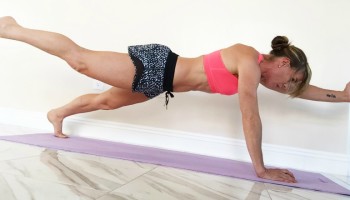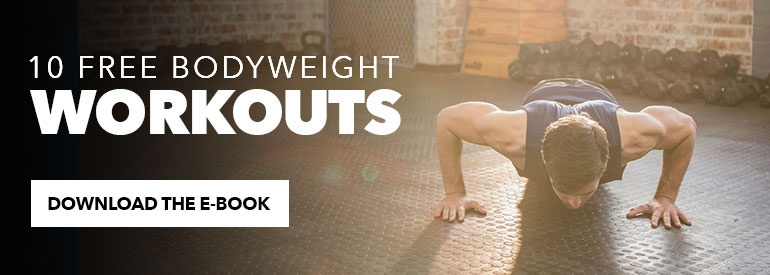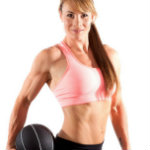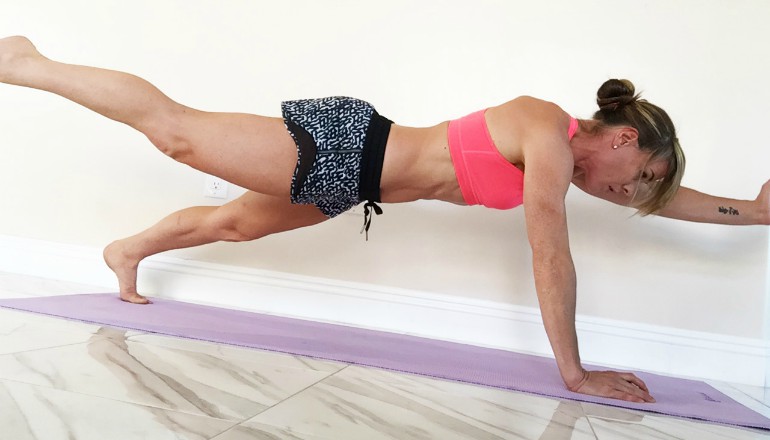 Reading Time: 5 minutes
Reading Time: 5 minutesWhen we hit the gym, so much of our motivation is about looking better so we can fit into that little black dress or flex our biceps in that tight shirt. In the midst of this, function is often overlooked.
Things like good posture, a strong core and stabilizers, balance, and other aspects of fitness are disregarded because they may not make a difference to how we look. The thigh abductor and adductor machine or pec deck are often preferred over more challenging and functional exercises like plank holds or a single-leg medicine ball chop.
But core training is essential since all movement goes through the core. If the core is weak, then your ability to push, pull, generate speed, slow down, and maintain good posture that supports your spine will all be compromised. And training the core in a way that increases stability, balance, and spinal support is difficult because it requires mental focus and coordination, which in turn involves far more neuromuscular control.
And, by the way, when I say “core,” I am talking about all aspects of the mid-section of your body such as the transverse abs, obliques, and erector spinae — not just the rectus abdominis (i.e. the six-pack).
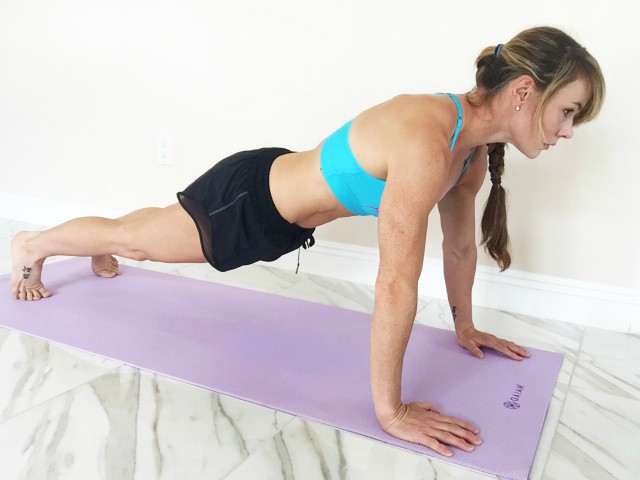
Core training helps me in everything from being a mom to athletic competition.
For me, coming from a lifetime of training as a gymnast and a martial artist, I find it strange to see the standard at the gym is a few sit-ups thrown in at the end of a workout before stretching — kind of like a consolation prize for the abs, so their feelings don’t get hurt and they don’t feel left out from the other muscles that have been worked.
Jokes aside, this way of training can result in strength imbalances, injuries, and back pain. In fact, 80% of Americans will experience back pain at some stage in their lives. It is the most common cause of job-related disability and a leading contributor to missed work days. I believe a lot of back pain can be attributed to sitting for long periods of time, which can affect the posture and weaken muscles such as the transverse abs and internal obliques, and this further compounds the issue of having a weakened core in the first place.
So, what good is having bulging biceps if you’re also experiencing chronic back pain?
The Right Way to Incorporate Core Training
Core training should be included in every fitness routine and not shoved to the end of a workout as last thought. Adding core exercises every day to split routines (selective muscle groups each day) or incorporating them into full-body circuits would be most beneficial for everyone.
The great thing is that core training can be about so much more than doing a bunch of sit-ups. This means you can get creative and make the workouts far more interesting. By adding some of these exercises into your routine, you’ll not only have fun, but you’ll get stronger and fitter on a functional level, which will keep the body balanced, mitigate the incidents of back pain, and help you maintain good posture.
Here is a favorite mini-workout of mine that incorporates the core in all the exercises. In some of the exercises, I use the core to brace, in others to help me maintain balance. These variations are all important for training all the aspects of the core.
Here is a brief breakdown of the exercises in this video:
- Push-ups with side oblique holds: Push-ups work the pecs, but they are also a great core workout in that you are activating the transverse abs to maintain a straight shape from head to toe. Performing the side hold engages the obliges, which support the sides and help with rotation. Perform 5 reps on each side.
- Prone single-leg extension: This exercise is pretty much a full-body exercise, but you will feel this most on the supporting leg, in particular in the quads. To maintain this static position while extending the leg, you must keep a strong frame throughout the shoulders, lats, and core, both to brace and to balance. Perform 10 reps on each side.
- Supine hip extensions: This exercise primarily works the transverse abs. Aim to keep pressing the middle of your back into the floor. If you relax your abs to ease the tension, the back will arch and come off the floor. Doing so will mean your spine is not supported and your abs are not engaged. To modify this movement until you build up strength, you can do alternating single-leg touch-downs. Perform 10 reps on each side.
- Single-leg plank with bent-leg pulses: This is possibly one of my favorite exercises since it works so many important muscle groups. The bent-leg pulses isolate the glute and are a challenge to do while maintaining the single-leg plank. This exercise also works the transverse abs and upper-body stabilizers. It is important to maintain a straight shape from head to toe. Try keep elbows in line with the shoulders and keep your butt down to ensure the transverse abs are working the entire time. Perform 10-15 reps on each side.
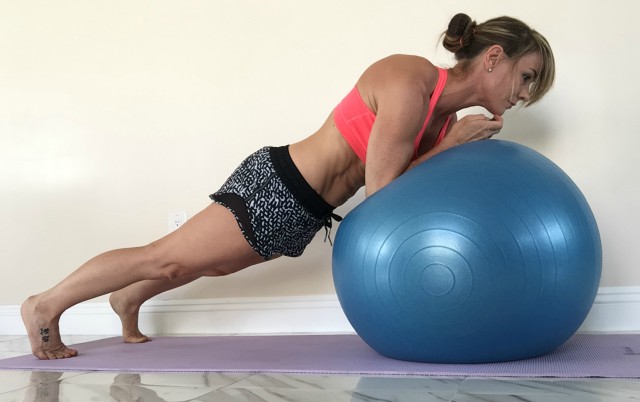
Core training is something I focus on in all my workouts. Click here to view my upcoming home workout series.
Be Creative with Your Core Training
Much of training the core is about building awareness that it is not just doing sit-ups. The core is a large area that involves many different muscles with their own functions.
We can incorporate core training into our routines by:
- Creating an unstable surface or doing something on one leg
- Adding a twist at the end of the lunge step
- Using a physio ball instead of a flat bench
In short, finding new and effective ways to engage your core is a great opportunity for you to get creative and add new movements to your workouts. Not only will the workouts be more fun, but you will be training the core alongside the rest of your muscles, and this will help to keep your entire body strong, minimize back pain, and maintain good posture.
